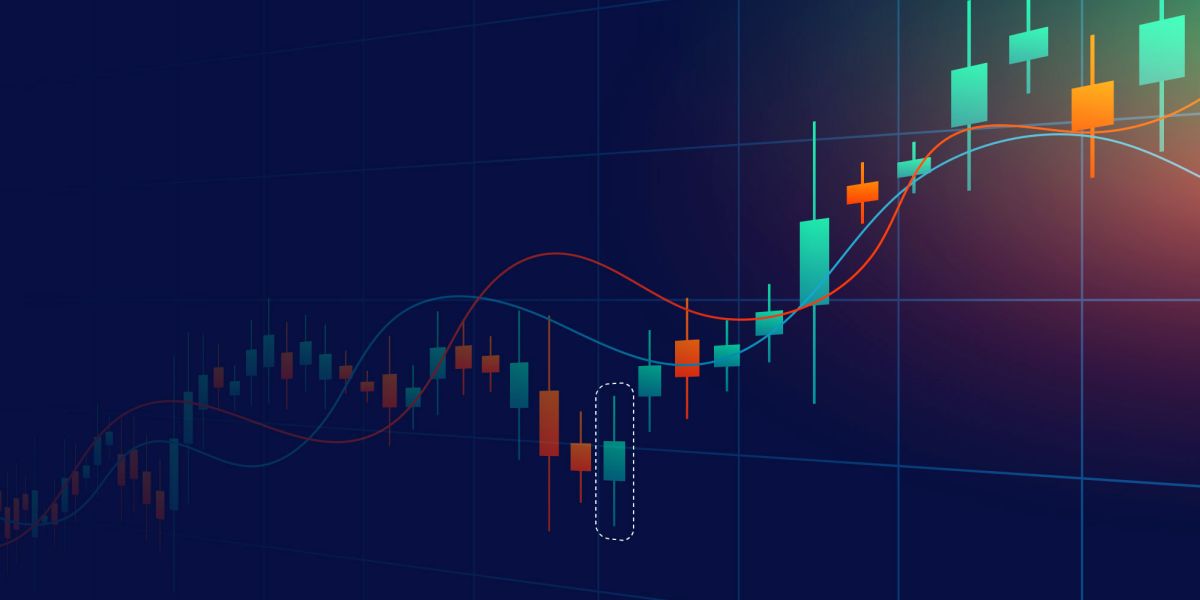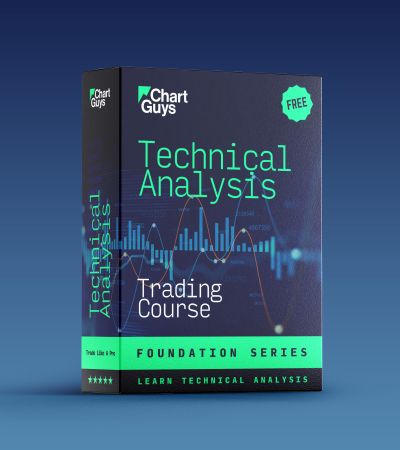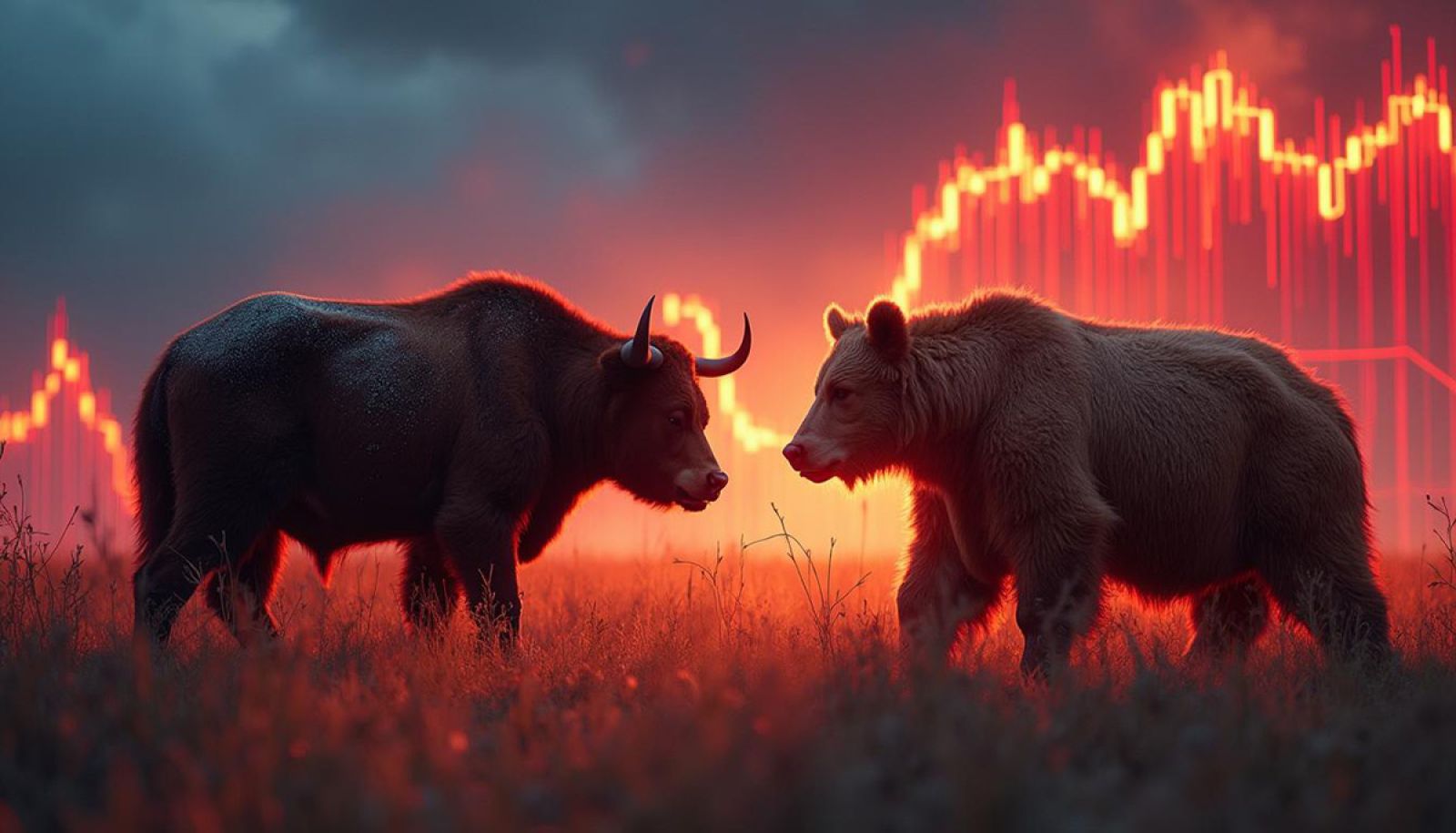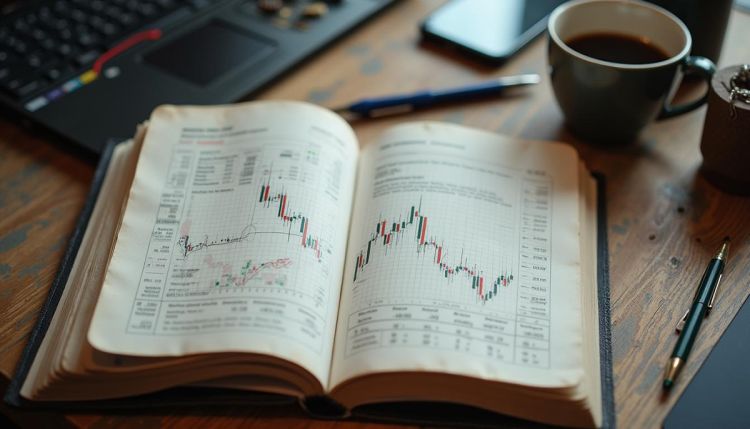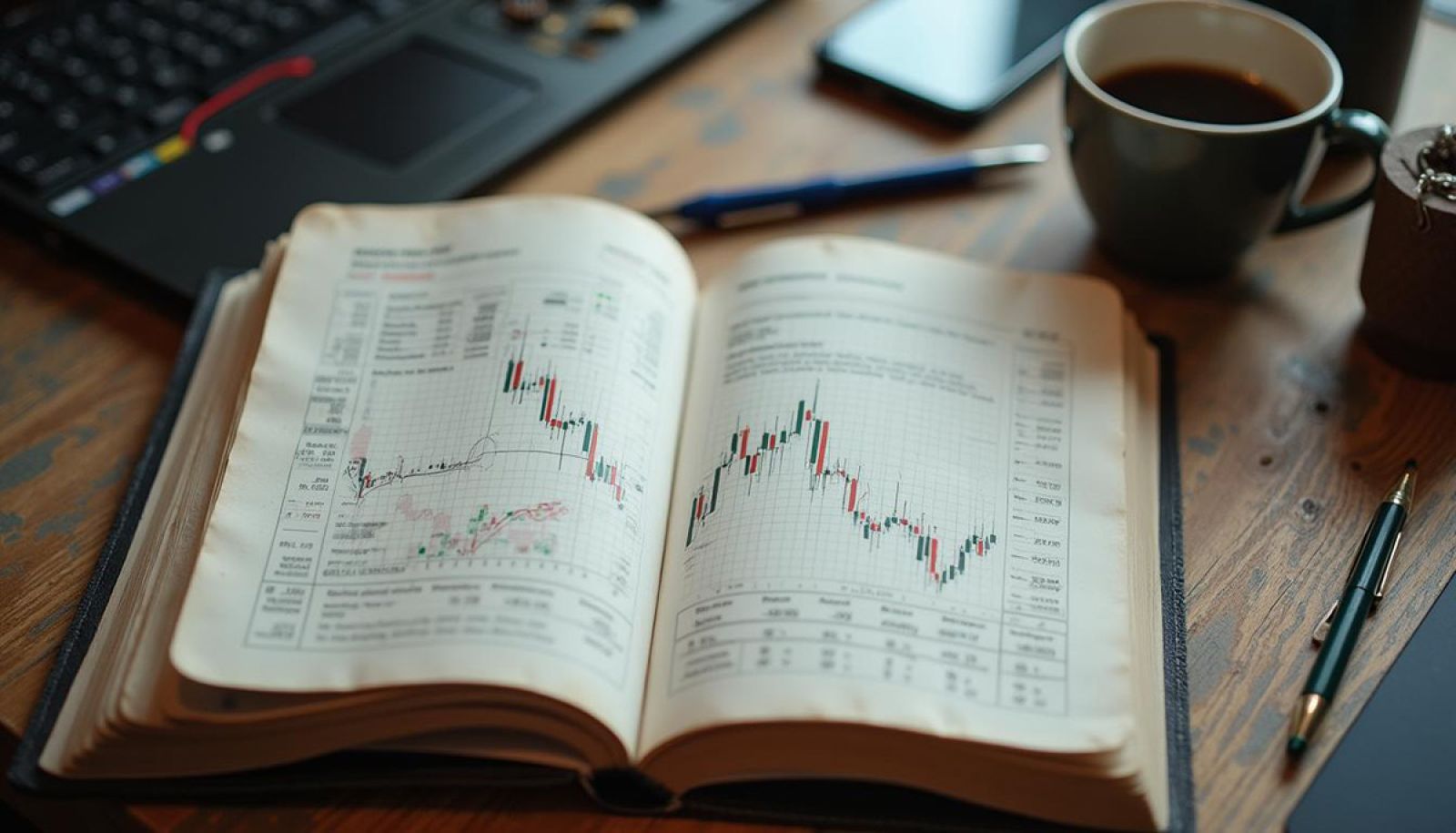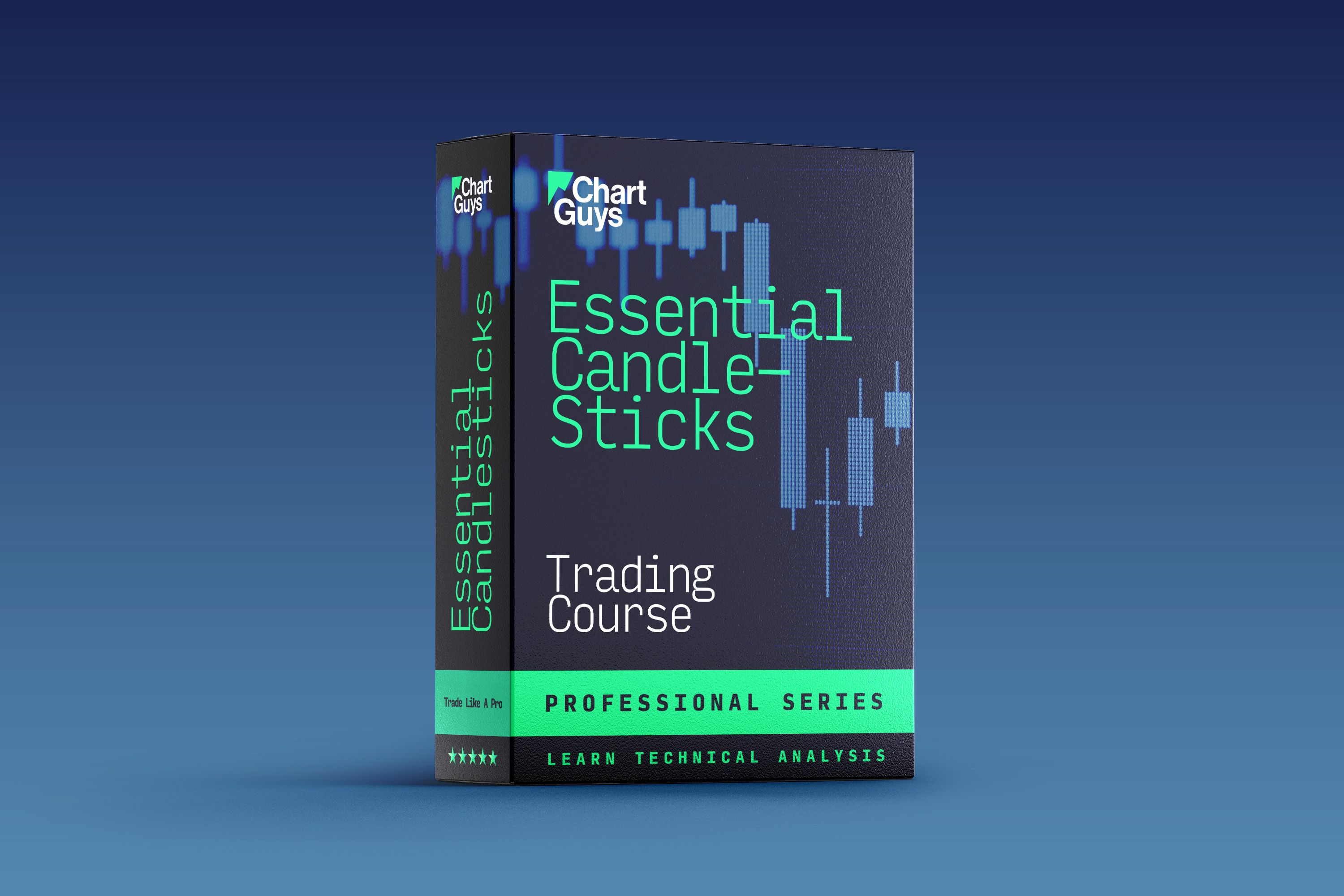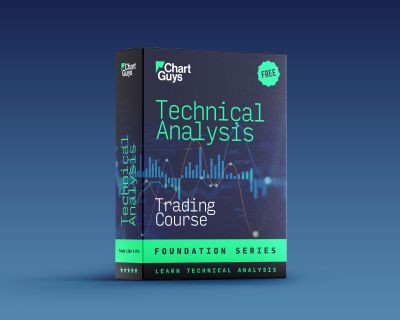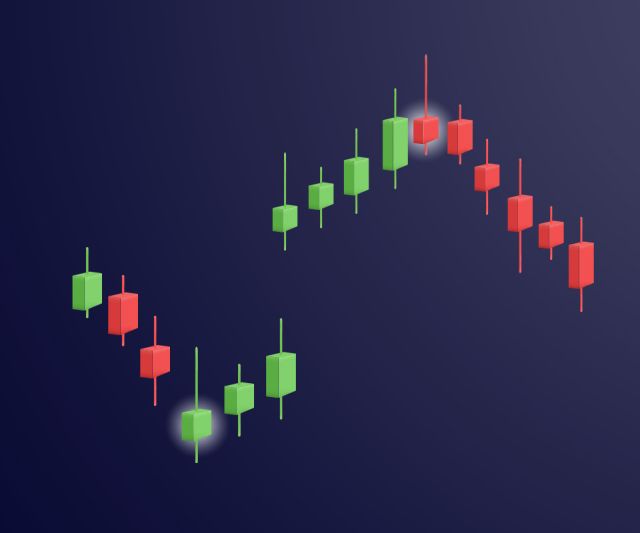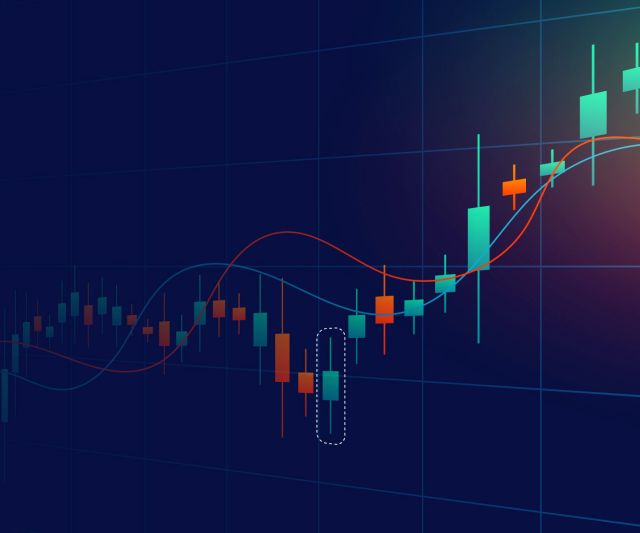The Cosmic Dance of Market Psychology
In the vast expanse of market data, certain patterns emerge that tell us profound stories about human behavior.
Engulfing candle patterns are among these messengers, and learning to read them will add one more valuable data point to a trader's decision tree.
"Markets are magnificent reflections of our collective hopes and fears, written in the language of price action."
These patterns don't just represent price movements—they reveal the shifting balance of power between optimism and pessimism, between those who see value and those who see risk.
The engulfing pattern appears like a moment of clarity in the chaotic noise of market activity. It's when one candle completely engulfs its predecessor, signaling not just a change in direction, but a fundamental shift in market sentiment.
What makes these patterns so compelling is their simplicity and their psychological truth—they show us exactly when the balance of power shifts from buyers to sellers, or vice versa.
The Wonder of Pattern Recognition
We humans are naturally wired to find patterns in the seemingly random.
Our ancestors looked to the stars and saw constellations.
"The ability to spot patterns isn't just useful—it's how we make sense of an otherwise overwhelming world."
When we apply this innate skill to financial markets, we discover that price movements aren't as random as they might first appear.
Engulfing patterns represent one of the clearest examples of this order within chaos—a moment when the market speaks with unusual clarity about its future intentions.
These patterns matter because they represent real human decisions and emotions—fear, greed, capitulation, and conviction—all crystallized in the relationship between two adjacent candles.
Understanding these patterns isn't just about predicting price movements; it's about understanding the collective psychology driving those movements.
Further Reading
The Fundamental Truth of Reversals
Markets, like life itself, are defined by change.
Nothing trends in one direction forever.
"Every persistent market movement eventually creates the conditions for its own reversal."
Engulfing patterns capture these pivotal moments when the exhaustion of one trend creates the energy for a new one. They show us when buyer exhaustion transforms into seller enthusiasm, or when seller capitulation gives way to renewed buyer interest.
As we explore the differences between bullish and bearish engulfing patterns in the sections to follow, remember that we're not just learning abstract technical concepts—we're developing a deeper understanding of market psychology and the eternal dance between fear and greed that drives all price action.
These patterns work because they reflect something fundamentally true about human behavior in markets, which is why they've remained relevant from 18th century Japanese rice markets to today's digital trading platforms.
What Are Engulfing Candle Patterns?
Here's the thing about engulfing patterns: they're the market's way of shouting that something significant has changed.
Think of an engulfing pattern as a cosmic eclipse in the financial universe—when one celestial body completely overtakes another, casting a new shadow over what's to come.
It's a two-candle formation where the second candle's body completely "engulfs" or covers the body of the previous candle, signaling a dramatic shift in the balance of power.
Remember: Engulfing patterns originated in 18th century Japanese rice markets, where traders developed candlestick analysis to track price movements long before modern technical analysis existed.
These patterns work because they capture a genuine psychological moment in the market—the moment when conviction shifts decisively from one side to the other.
Imagine you're watching two teams play tug-of-war.
For a while, they're evenly matched, moving back and forth slightly.
Then suddenly, one team pulls with such force that they not only regain lost ground but drag their opponents past their starting position. That's an engulfing pattern in action.
Think of it this way: the first candle represents the dying momentum of the current trend, while the second, larger candle represents the emergence of a powerful counter-trend force.
When a small bearish candle is completely engulfed by a larger bullish candle after a downtrend, buyers are essentially declaring, "We're taking control now."
Conversely, when a small bullish candle is overwhelmed by a larger bearish one after an uptrend, sellers are making the same declaration.
In real-world terms, imagine Apple stock has been declining for weeks. Then one day, it opens slightly lower (continuing the downtrend), but by day's end, it has rallied so strongly that it closes higher than the previous day's open—completely reversing the prior day's movement and then some.
This bullish engulfing pattern suggests the weeks-long downtrend might be exhausted, with new buying interest emerging.
Remember: The size difference between the two candles matters. The more the second candle engulfs the first, the more powerful the potential reversal signal.
The Dark Eclipse of Market Sentiment
Here's the thing about bearish engulfing patterns: they represent the moment when market optimism transforms into sobering reality.
A bearish engulfing pattern emerges when a smaller bullish candle is completely engulfed by a larger bearish candle, telegraphing that sellers have overwhelmed buyers in a dramatic fashion.
Anatomy of the Bear's Arrival
-
First candle: A smaller green/white bullish candle showing modest upward momentum
-
Second candle: A larger red/black bearish candle that completely encapsulates the previous candle's body
-
Location: Typically appears at the end of uptrends or at resistance levels
-
Volume: Often accompanied by higher-than-average volume, signaling stronger conviction
The Psychological Moment
Think of it this way: the market was feeling good about itself, moving higher with confidence, when suddenly doubt floods in and prices reverse dramatically.
If the bearish engulfing candle appears after a long uptrend, then it likely signals exhaustion and potential reversal.
If the pattern forms with the second candle breaking below a key support level, then the bearish implications become significantly stronger.
Real-World Recognition
If the second candle opens higher than the previous close, then gaps up (appearing initially bullish), but closes below the previous candle's open, the fake-out makes the pattern more powerful
If the pattern appears with increasing volume, then seller conviction is confirmed
If multiple technical indicators are already showing overbought conditions, then the pattern's reliability increases dramatically
Remember: The larger the second candle relative to the first, the more significant the potential shift in market sentiment it represents.
Trading Implications
If a bearish engulfing pattern forms at a major resistance level, then consider preparing for a potential trend reversal.
If the second candle engulfs multiple previous candles, then the bearish signal is especially powerful and may indicate a sharp correction ahead.
Key Differences Between Bullish and Bearish Engulfing Patterns
Bullish and bearish engulfing patterns reflect this duality perfectly, but understanding their distinct characteristics helps us interpret them more accurately.
The most fundamental difference lies in their location within market structures.
Bullish engulfing patterns typically appear at the bottom of downtrends, signaling potential exhaustion of selling pressure. They emerge when buyers finally muster enough conviction to overwhelm the sellers who have been dominating.
Bearish engulfing patterns, conversely, form at the tops of uptrends, indicating that sellers have gained enough strength to overpower the buyers who've been in control.
Structurally, the patterns are inversions of each other. In the bullish variant, a smaller red candle is engulfed by a larger green candle. In the bearish version, a smaller green candle is swallowed by a larger red one.
Both represent a complete reversal and extension of the previous day's price action, but in opposite directions.
Dos and Don'ts When Differentiating These Patterns:
Do:
-
Pay attention to the preceding trend before identifying the pattern
-
Consider the size differential between the two candles as a measure of strength
-
Look for volume confirmation appropriate to each pattern type
-
Validate the pattern with other technical indicators
Don't:
-
Assume both patterns are equally reliable in all market conditions
-
Ignore the broader market context when interpreting either pattern
-
Trade solely based on the appearance of these patterns without confirmation
-
Expect identical follow-through behavior from both pattern types
Trading Strategies for Engulfing Candles: The Bullish & Bearish Playbook
Engulfing patterns are not just pretty formations on your chart—they're invitations to action.
But only if you know how to respond.
The Entry Point Dance
For bullish engulfing patterns, the classic entry comes after confirmation—typically the candle following the pattern breaking above the high of the engulfing candle.
For bearish engulfing patterns, patient traders enter after the next candle breaks below the low of the engulfing candle.
Think of it this way: the engulfing pattern is the market clearing its throat—the follow-through candle is when it actually starts speaking.
Pro Tip: Wait for the close of the confirmation candle rather than jumping in mid-formation. Markets love to fake out impatient traders.
Stop-Loss Placement: The Art of Intelligent Defense
With bullish engulfing patterns, your stop-loss belongs below the low of the engulfing candle—the market has told you it shouldn't go there again if the reversal is genuine.
For bearish engulfing setups, place your stop above the high of the engulfing candle—any price action above that level invalidates the bearish thesis.
Quick Tip: Add a small buffer (5-10 pips or a small percentage) beyond these levels to avoid getting stopped out by market noise.
The Target Setting Conundrum
Engulfing patterns don't come with built-in targets. This is where many traders falter.
Think of it this way: the engulfing pattern tells you "what" (a reversal) and "when" (now), but not "how far" (the target). For that, you need additional technical tools.
Pro Tip: Consider using the previous swing high/low, key support/resistance levels, or Fibonacci extensions to establish logical profit targets.
Risk Management: The True Edge
The ideal risk-reward ratio starts at 1:2 for engulfing pattern trades.
If you can't find a logical target offering at least twice your risk, consider skipping the trade.
Common Misconception: "Engulfing patterns work equally well in all timeframes."
Reality: Higher timeframe engulfing patterns (daily, weekly) generally produce more reliable signals than lower timeframes, which generate more noise and false signals.
Quick Tip: Scale your position size based on the confluence of factors supporting the pattern—more confirmation factors justify larger position sizing.
Confirmation Signals: Strengthening Your Case
Volume should increase on the engulfing candle—this validates the conviction behind the reversal.
Think of it this way: without volume, an engulfing pattern is like thunder without lightning—all show, no substance.
Common Misconception: "The larger the engulfing candle, the better the trade."
Reality: While size matters, location matters more. An average-sized engulfing pattern at a key support/resistance level outperforms a massive engulfing pattern in no-man's-land.
Pro Tip: Before entering any engulfing pattern trade, ask yourself: "Does this reversal make logical sense in the bigger picture?" If you can't articulate why the market should reverse here, consider passing.
Remember: The best engulfing pattern trades often come when multiple technical factors align—support/resistance, oversold/overbought conditions, trend line breaks, and the engulfing pattern itself all pointing to the same conclusion.
The Cosmic Truth About Engulfing Patterns
Engulfing patterns are windows into the collective psychology of market participants—moments when the balance of power shifts decisively from one side to the other.
They work not because of some mystical chart magic, but because they capture genuine turning points in supply and demand dynamics.
Their power comes from what they represent: the moment when one side capitulates and the other seizes control.
The Bottom Line: Engulfing patterns aren't guarantees—they're probabilities. The best traders use them as one piece of a larger analytical framework, combining them with trend analysis, support/resistance levels, volume studies, and broader market context.
Remember: The market doesn't care about your patterns. It cares about supply and demand, fear and greed, pain and euphoria. Engulfing patterns simply help us visualize these invisible forces.
The truly wise trader doesn't just see engulfing patterns—they see through them to the human emotions they represent.
That's where the real edge lies.

